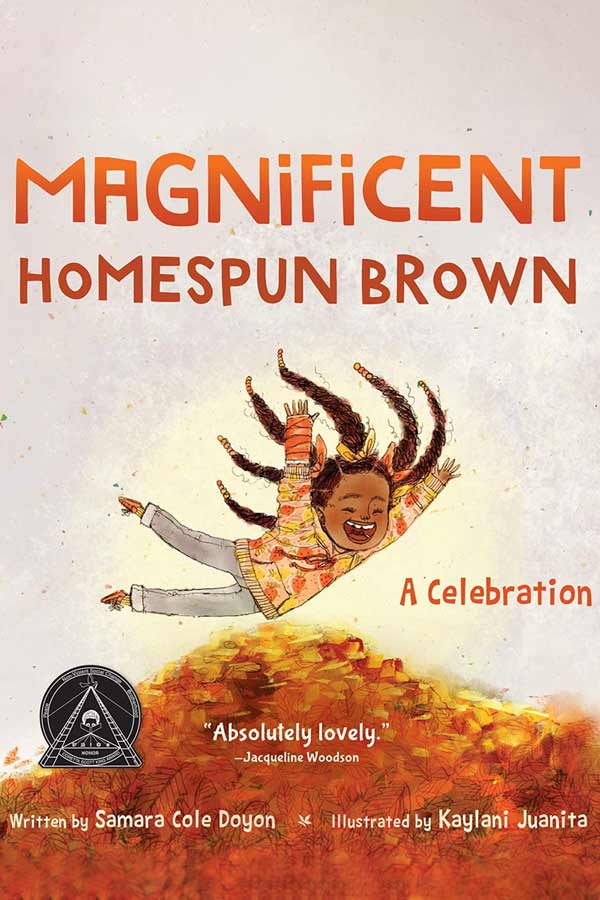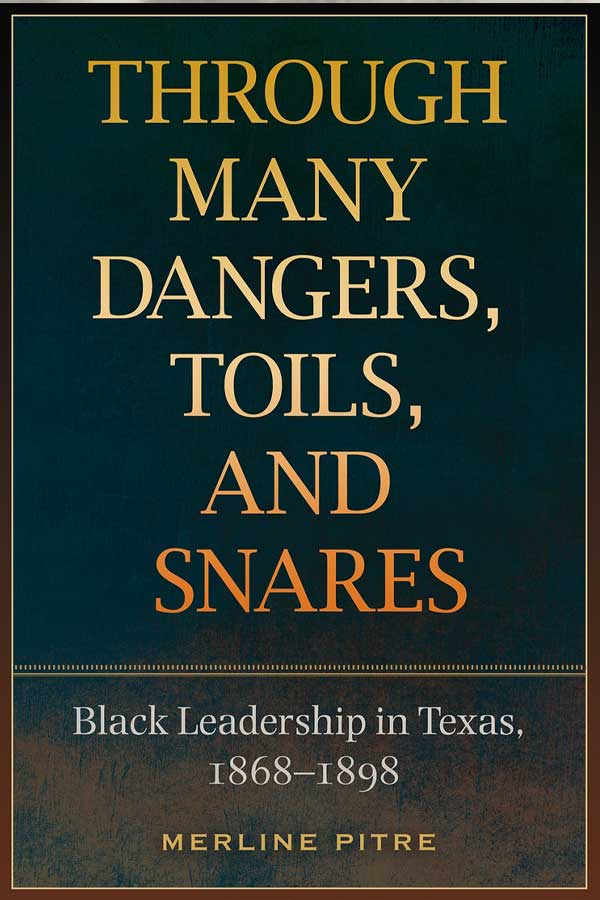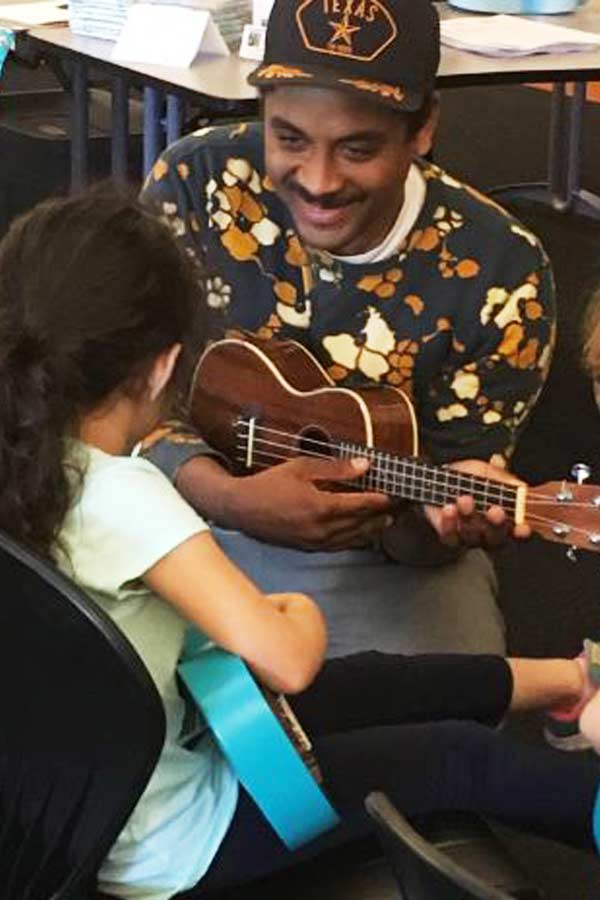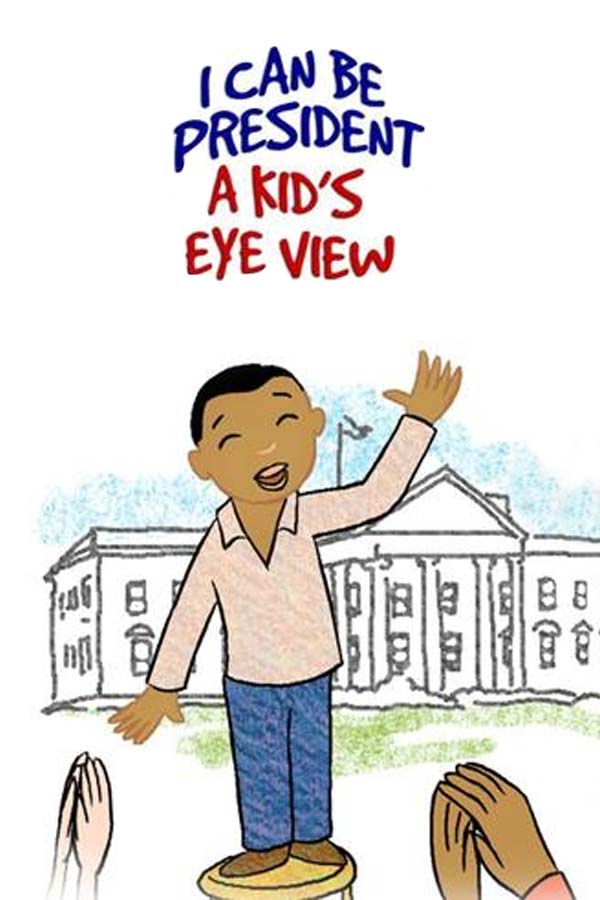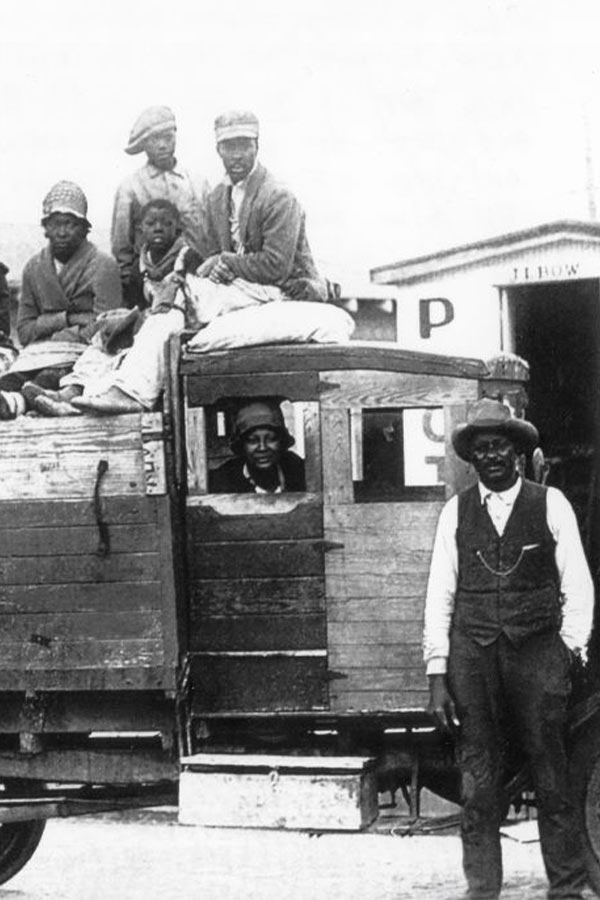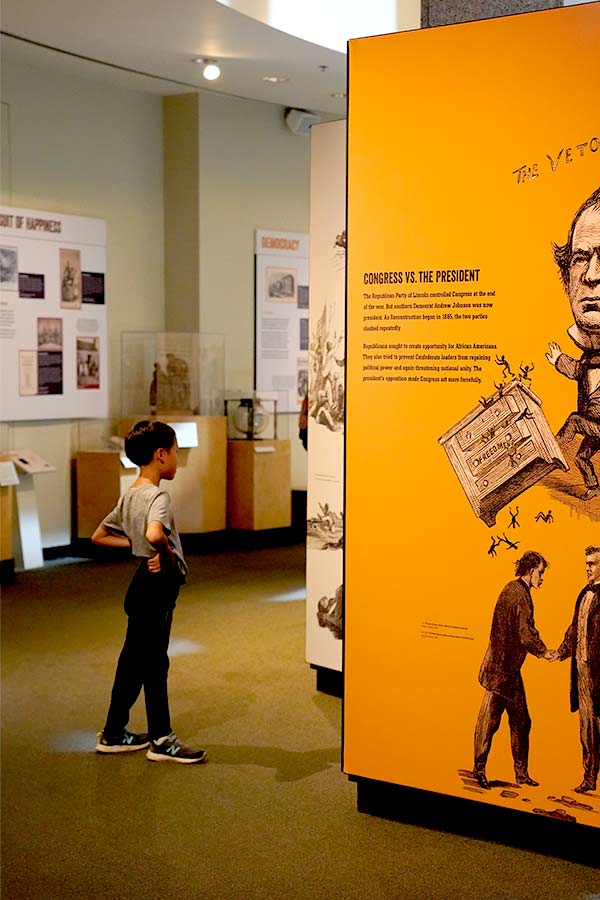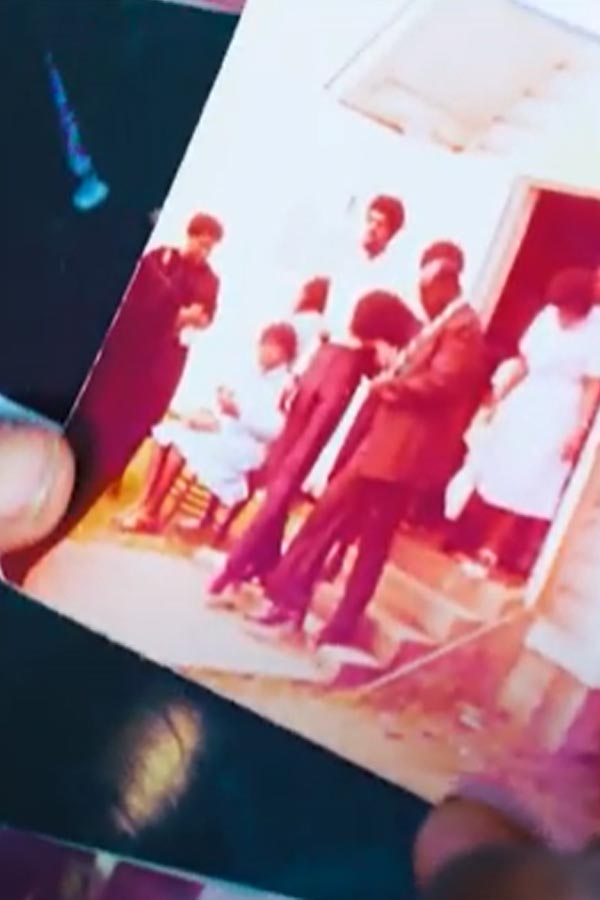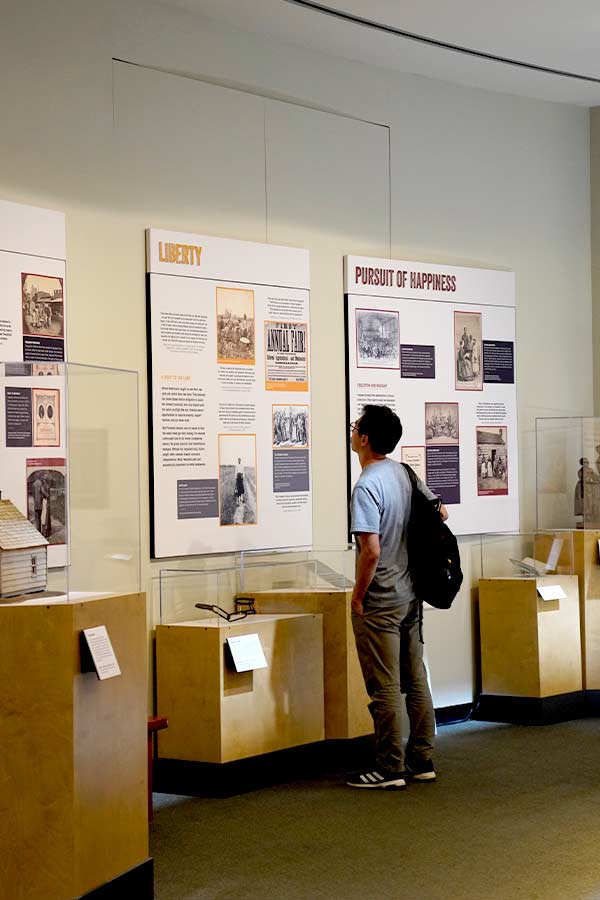Black Citizenship in the Age of Jim Crow
“America has a century-old debt to pay contracted on Emancipation Day.”
Black Citizenship in the Age of Jim Crow explores the struggle for full citizenship and racial equality that unfolded in the 50 years after the Civil War.
When slavery ended in 1865, a period of Reconstruction began. By 1868, all Black persons born in the United States were citizens and equal before the law. But efforts to create an interracial democracy were contested from the start.
The struggle over who has the right to citizenship and who belongs has been at the heart of American life over centuries. This was a period that had incredible strides forward in equality for everyone. But it was also a story of incredible strides backwards. Marci Reaven, Vice President of History Exhibitions, New York Historical Society
A harsh backlash to equal citizenship ensued, ushering in the “separate but equal” age of Jim Crow laws. More than 150 years later, the nation remains divided over issues of racial equality, the rights of full citizenship, and the meaning of American democracy.
Inside the Exhibition
Black Citizenship in the Age of Jim Crow takes a national perspective on these transformative years with a particular focus on evolving definitions and expressions of equality and citizenship. Narratives center on African Americans who pursued the ideals of Reconstruction and persevered in the face of a developing legal system of Jim Crow laws and policies promoting racial inequality.
- Explore the unique stories of individuals involved in early struggles for equal rights.
- See artifacts that juxtapose the promises of equal rights and an expansive definition of citizenship with the often violent backlash against Black advancement that would reverse many of these gains.
- Examine the ideas and actions of those in power that gave rise to legalized discrimination, alongside stories of African Americans who continued to push for their rights within this oppressive environment.
- Listen to early recordings of songs from the movement including Swing Low, Sweet Chariot to Strange Fruit.
- View historic footage of rarely seen early moving images.
Exhibition Sections
- Introduction: Linking the Civil War, Reconstruction, and the Civil Rights Era, the exhibition opens with the 1963 March on Washington and traveling backwards in time to highlight the connections in the long fight for Black equality that continues today.
- Reconstructing Citizenship 1865‒1877: Providing a compelling account of Reconstruction, this section encompasses its transformative influence on American society.
- The Rise of Jim Crow 1877‒1900: The third exhibition section explores Jim Crow, a system of second-class citizenship and racial segregation enacted across the nation to keep power in the hands of white citizens.
- Challenging Jim Crow 1900‒1919: The final portion of the exhibition carries the story into the 20th century and focuses on a range of individuals whose actions challenged the dominance of Jim Crow and white supremacy through politics, art, business, and more.
Select Artifacts on View
Educational Resources
- Request the Downloadable Classroom Poster Set to display. This free 8-piece poster series explores the years from the Civil War through World War I.
- Use this Curriculum Guide with your students for an in-depth study of many of the primary source artifacts, images, and documents from the exhibition
- "Visit" this interactive, virtual version of the exhibit and use this Discussion Guide to lead engaging and thought-provoking conversations with your students.
- History @ Home lessons that can be used at home or in the classroom to explore the topics from the exhibition as well as lessons that look more broadly at Black historical figures and the Black experience in American history.
Black Citizenship in the Age of Jim Crow was organized by the New-York Historical Society. Lead support for the exhibition provided by the National Endowment for the Humanities: Exploring the human endeavor. Major support provided by the Ford Foundation and Crystal McCrary and Raymond J. McGuire.

Any views, findings, conclusions or recommendations expressed in these programs do not necessarily represent those of the National Endowment for the Humanities.
Support provided by the Alice Kleberg Reynolds Foundation and Jeanne and Michael L. Klein.
The Bullock Texas State History Museum is a division of the State Preservation Board. Additional support of exhibitions and programs is provided by the Texas State History Museum Foundation.
Banner image "Photograph of young girls from The Crisis, May 1918," Courtesy Indiana University Libraries.
Subtitle text: Quote from placard created for 1963 March on Washington.
Lender
New-York Historical Society
On View
At the museum: 06/19/2021 - 11/28/2021
